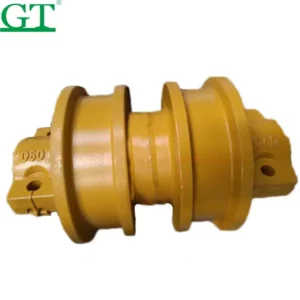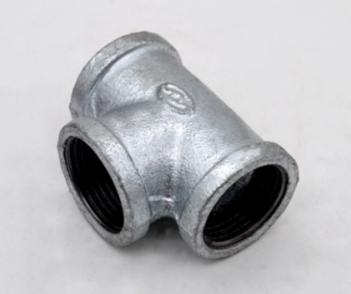What measures are in place to prevent corrosion and rust on the excavator bottom roller?
Preventing corrosion and rust on excavator bottom rollers involves several measures aimed at protecting the surface and ensuring long-term durability. Here are some of the measures commonly employed:
- Material Selection: Bottom rollers are typically constructed from corrosion-resistant materials such as alloy steel or stainless steel. These materials offer excellent resistance to rust and corrosion, especially when exposed to moisture or harsh environmental conditions.
- Surface Coatings: Bottom rollers may be coated with protective finishes or coatings to create a barrier against moisture and corrosive elements. Common coatings include zinc plating, galvanization, or specialized paint formulations designed to withstand the rigors of outdoor use.
- Sealed Bearings: Bottom rollers are equipped with sealed bearings to prevent moisture, dirt, and debris from entering the bearing housing. Sealed bearings help maintain proper lubrication and prevent corrosion of internal components, ensuring smooth operation and prolonging the service life of the bottom roller.
- Proper Lubrication: Adequate lubrication of bottom roller bearings is essential for preventing rust and corrosion. Regular greasing or lubrication intervals specified by the manufacturer help protect the bearing surfaces from moisture and friction-related wear, reducing the risk of corrosion and extending the service life of the bottom roller.
- Regular Inspection and Cleaning: Periodic inspection and cleaning of bottom rollers are crucial for detecting signs of corrosion or rust early on. Visual inspection allows operators to identify areas of concern, such as chipped paint or surface damage, while cleaning removes dirt, debris, and contaminants that can accelerate corrosion.
- Paint Touch-up: Any scratches, chips, or areas of exposed metal on the bottom roller should be promptly addressed with paint touch-up to prevent corrosion from spreading. Applying a suitable rust-inhibiting paint or coating to damaged areas helps protect the surface and maintain the integrity of the bottom roller.
- Storage Practices: When excavators are not in use, proper storage practices can help prevent corrosion of bottom rollers. Storing equipment in a dry, covered environment or using protective covers can shield bottom rollers from moisture and atmospheric exposure, reducing the risk of rust formation.
- Environmental Considerations: Consideration of environmental factors such as exposure to saltwater, chemicals, or corrosive substances is essential for preventing corrosion of bottom rollers. In corrosive environments, additional protective measures such as specialized coatings or surface treatments may be necessary to mitigate the effects of exposure.
By implementing these measures, operators can effectively prevent corrosion and rust on excavator bottom rollers, ensuring reliable performance, extended service life, and minimized maintenance costs. Regular inspection, maintenance, and protective coatings are essential components of a comprehensive corrosion prevention strategy for bottom rollers and other undercarriage components.



